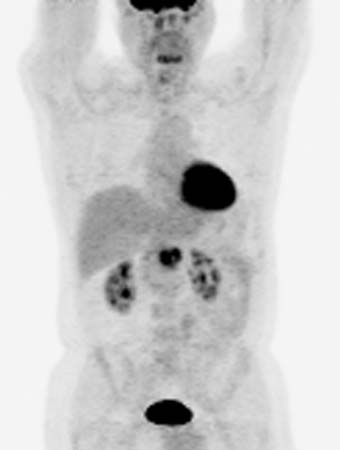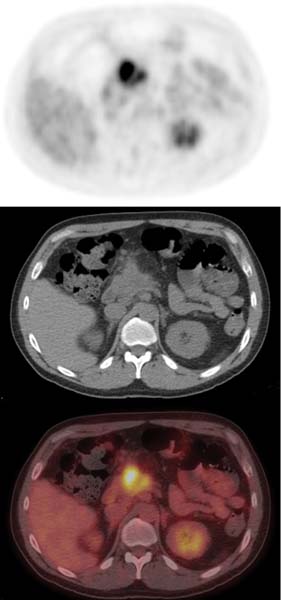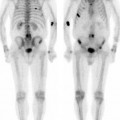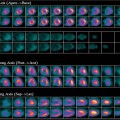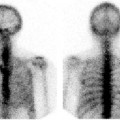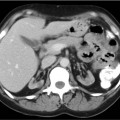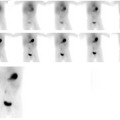CASE 78 A 55-year-old man has been shown to have a mass in the head of the pancreas. PET is requested for staging. Fig. 78.1 Fig. 78.2 • The patient is instructed to avoid vigorous exercise for 24 hours prior to the scan, fast for at least 4 hours before the study, drink water during the fasting and uptake periods, and void prior to the scan • A venous serum glucose sample is obtained prior to the injection of 18F-FDG (reference range is < 120 mg/dl for non-diabetic patients and < 200 mg/dl for diabetic patients), and the patient’s height and weight are recorded • A 10–20 mCi dose of 18F-FDG is injected intravenously (in a dimly lit quiet room for brain PET scans), and the patient is asked to rest comfortably in a room that is kept warm • Most PET scans are now acquired on a hybrid PET/CT scanner, and a low dose spiral CT is acquired for attenuation correction of the PET images and for anatomic localization. Some centers may choose to perform oral and/or intravenous contrast-enhanced diagnostic CT as part of the PET/CT examination • A 2D or 3D PET acquisition (depending on the manufacturer) is then performed over the same region (s), and all PET images are corrected for attenuation, detector efficiency, scatter, decay, and random coincidences • Consistency in 18F-FDG injected dose, scan acquisition time relative to the injection time, and acquisition and reconstruction protocols is important when performing serial scanning on the same patient The anterior maximum-intensity pixel (MIP) image from the PET scan (Fig. 78.1) demonstrates increased 18F-FDG uptake in the midline of the upper abdomen. There is otherwise normal physiologic uptake, with no pathologic uptake in the local lymph nodes and no distant metastases. Axial PET, CT, and fused PET/CT (Fig. 78.2) confirm 18F-FDG uptake in a pancreatic mass. • Pancreatic adenocarcinoma • Other pancreatic malignancy • Pancreatitis Pancreatic adenocarcinoma. Diagnosis final, no clinical follow-up.
Clinical Presentation
Technique
Image Interpretation
Differential Diagnosis
Diagnosis and Clinical Follow-Up
Discussion
Stay updated, free articles. Join our Telegram channel

Full access? Get Clinical Tree


